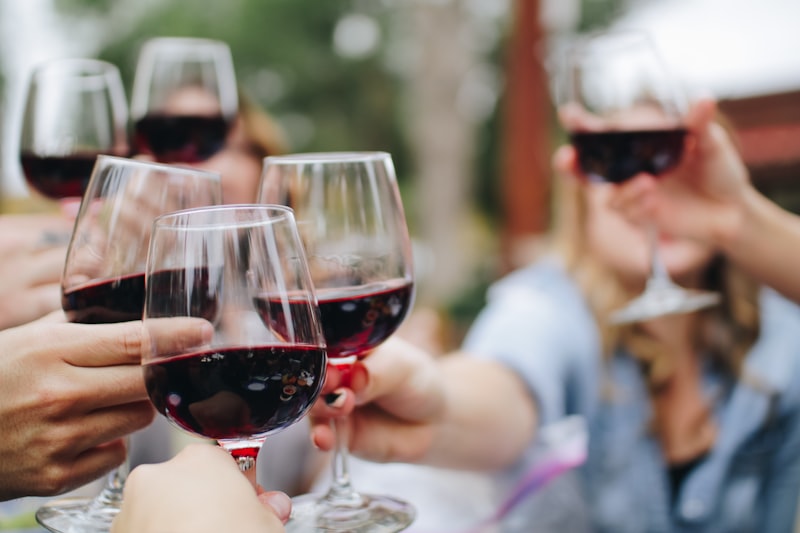Chocolate Wine Pairing: An Amazing Culinary Experience
Pairing chocolate and wine can elevate both elements to create a delightful experience. It’s an art that involves understanding the flavor profiles of both components. While it may seem daunting, with some basic knowledge, anyone can master the pairing of these two delicious delights.
The Basics of Chocolate
Before diving into pairings, it’s essential to understand the different types of chocolate: dark, milk, and white. Each type has unique characteristics that influence the pairing process.
- Dark Chocolate: Often contains 50-100% cocoa. It’s less sweet and has a more robust, intense flavor profile.
- Milk Chocolate: Contains 10-50% cocoa with added milk solids. It’s sweeter and creamier than dark chocolate.
- White Chocolate: Made with cocoa butter, sugar, and milk solids, it contains no cocoa powder. It offers a sweet and creamy taste.
Understanding these differences can help in selecting the right wine to complement the chocolate’s distinct characteristics.
The Flavor Profiles of Wine
Wine brings its own complex flavors and aromas to the table. Key components include sweetness, acidity, tannins, and body. Here’s how each affects the pairing:
- Sweetness: Wines can range from dry to sweet. Matching sweetness levels can prevent one element from overpowering the other.
- Acidity: This can add freshness and balance to rich chocolates.
- Tannins: Found primarily in red wines, tannins can create a drying sensation. They can complement the bitterness of dark chocolate.
- Body: The weight of the wine. A full-bodied wine might overpower light chocolates like white chocolate.
Guide to Chocolate and Wine Pairing
Balancing the elements of chocolate and wine is key. Here are some guidelines to create perfect pairings:
Dark Chocolate Pairings
Dark chocolate with its high cocoa content pairs well with wines that mirror its intensity.
- Cabernet Sauvignon: Rich with tannins and dark fruit, it complements the bitterness of dark chocolate.
- Merlot: With its smoothness and plum flavors, it balances out intense cocoa notes.
- Zinfandel: Offers a jammy fruit profile that can highlight chocolate’s deeper flavors.
- Port Wine: A sweet, fortified wine that pairs well with the bitterness of high-cocoa chocolates.
Milk Chocolate Pairings
Milk chocolate’s creaminess and sweetness allow for a different set of wines.
- Pinot Noir: A lighter red wine that brings red berry notes and a gentle structure.
- Riesling: Often sweet, its acidity can cut through the milkiness of the chocolate.
- Ruby Port: Its sweetness complements the sugar found in milk chocolate.
- Brachetto d’Acqui: Sparkling with red fruit notes, it enhances chocolate’s nutty undertones.
White Chocolate Pairings
White chocolate, with its higher sugar content and subtle flavors, calls for contrasting wines.
- Moscato d’Asti: Light and sweet, it harmonizes with white chocolate’s creamy texture.
- Ice Wine: Sweet with high acidity, it’s a refreshing match for white chocolate.
- Sherry: Particularly an Amontillado or Oloroso can add nutty, complex flavors.
- Chardonnay: Especially with oak influences, it provides a textured complement to white chocolate.
Tips for Successful Pairing
Keep these tips in mind for a better pairing experience:
- Similar Intensity: Match the intensity of the wine with the intensity of the chocolate to avoid imbalance.
- Experiment: Everyone’s palate is different. Try various combinations to find personal preferences.
- Temperature Matters: Serve wines at their ideal temperatures to ensure flavors are at their peak.
- Serve Small Portions: To truly savor the pairing, keep portions manageable.
Exploring Regional Pairings
Regional pairing can add another layer of enjoyment, aligning local chocolate with regional wines. In France, one might pair Burgundy wine with local chocolate truffles. Italian chocolates shine when paired with wines like Chianti or Prosecco. Experimenting with regional delights can enhance your understanding of local flavors.
Chocolate & Wine Tasting Events
Attending a chocolate and wine tasting event can be enlightening. Experts often guide attendees through the nuances of pairings, explaining why certain combinations work. These events offer an opportunity to learn directly from skilled sommeliers and chocolatiers. People can gather insights that enhance their future tasting experiences.
The Role of Personal Preferences
While guidelines are helpful, your preferences make the pairing unique. Tasting notes often describe ideal combinations, but personal enjoyment is key. Don’t hesitate to veer from traditional pairings if you find a combination that pleases your palate. The goal is to enhance your chocolate and wine experience.
Non-Traditional Pairings
Non-traditional pairings can surprise the palate. Some adventurous tasters enjoy mixing spicy chocolate with a bold Syrah. Others might find success in combining chocolate with sparkling rosé. Exploring these non-mainstream options can lead to delightful discoveries.
Importance of Quality in Pairing
The quality of both chocolate and wine can significantly affect the pairing experience. Premium chocolate has more nuanced flavors. Similarly, investing in a quality bottle of wine can make a noticeable difference. Both elements working in harmony create an unforgettable tasting experience.
Hosting a Chocolate and Wine Pairing Party
Gather friends for a chocolate and wine pairing event at home. Offer a selection of chocolates ranging from dark to white. Pair them with various wines discussed earlier. Encourage guests to note their favorites and discover new combinations. It’s a social and educational experience that offers something for everyone.
Common Pairing Mistakes
Avoid common pitfalls in pairing. Don’t pair a dry red wine with a sweet chocolate, as it might result in an unpleasant taste. Balance is key. Overpowering a subtle chocolate with a full-bodied wine might also detract from the experience. Keep both elements in harmony for the best results.
The Science Behind Pairings
The chemistry of chocolate and wine involves complex interactions. Tannins in wine react with fats in chocolate, creating a fascinating texture and flavor change. Understanding these scientific elements adds depth to the pairing experience. It’s a reminder that pairing is not just an art, but a blend of science and taste.
Chocolate and Wine: A Global Perspective
Different cultures approach chocolate and wine pairings uniquely. In South America, where cacao is abundant, wine pairings often incorporate local varieties. Understanding global perspectives expands appreciation for both chocolate and wine. It highlights how culture and tradition influence culinary arts.
Final Thoughts on Exploration
Exploration is at the heart of chocolate and wine pairing. Knowledge, experimentation, and personal preference drive the experience. Encouraging curiosity and an open palate can lead to remarkable and enjoyable pairings. Whether hosting a tasting or enjoying a quiet evening, the journey of pairing is a rewarding pursuit.

